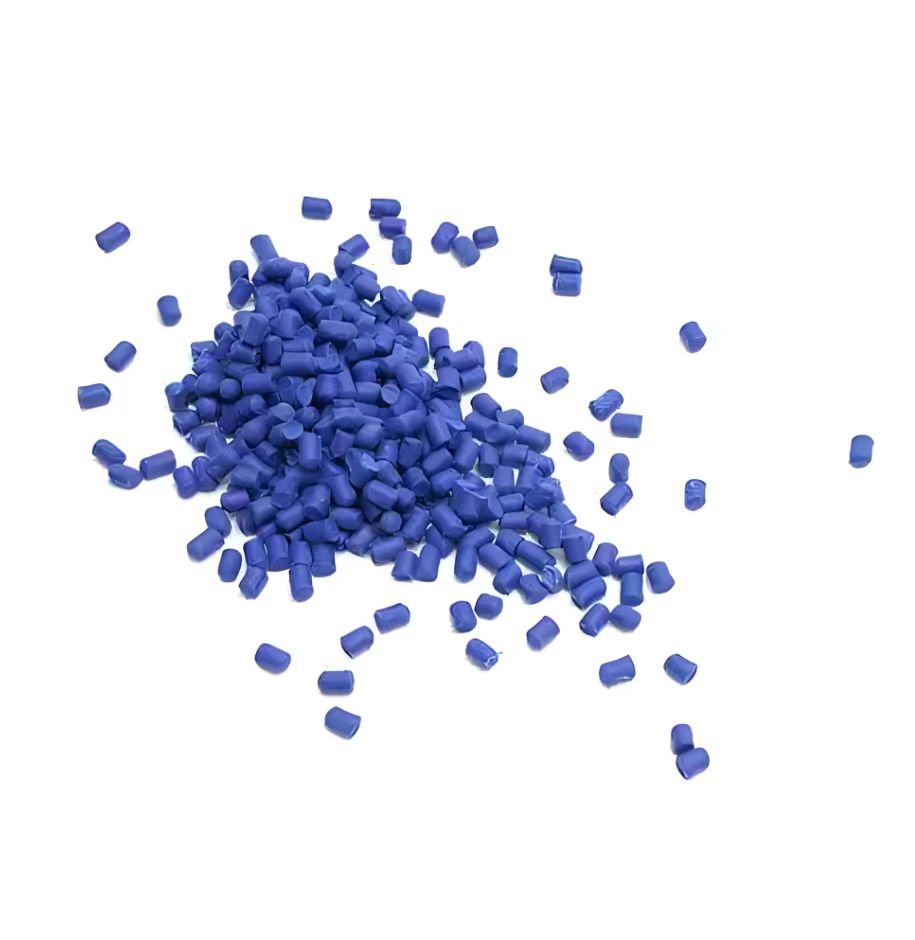The core engine of greenhouse film market growth comes from the Asia-Pacific region. The rapid expansion of ground areas supporting greenhouse cultivation in countries such as India, South Korea, China and Japan has boosted the demand for high-quality greenhouse films in the region.

From the perspective of material technology, the market is showing a diversified development trend:
Glass-based films account for about 55% of the market share due to their high durability and light transmittance, providing optimal growth conditions for plants.
Plastic films are showing the fastest growth trend due to their advantages such as light weight, low cost and easy installation2.
Glass-plastic composites have emerged as a new force, combining the advantages of two materials, combining durability, light transmittance and cost-effectiveness.
The technological evolution of planting systems is also worth paying attention to. The hydroponic market segment is expected to grow the fastest during the forecast period, accounting for about 30% of the global glass plastic greenhouse market revenue in 2024, with a compound annual growth rate of 6.5%.
Its core advantages are increased crop yields, reduced water consumption and more precise nutrient control capabilities.
02 Technological breakthrough: Bio-based film performance upgrade and cost reduction
The performance of bioplastic packaging has achieved a major breakthrough. The BIOPROCESS project led by AIMPLAS has successfully developed high-performance natural polymer films, using natural polymers such as polysaccharides, animal and plant proteins, and improving performance through one-step film-forming technology.
The project innovatively uses unidirectional stretching (MDO) extrusion technology to process a variety of commercial bioplastics, and also develops new formulas based on algae, corn/potato starch, gelatin or protein. Most of these materials are industrial by-products, and they have become the preferred raw materials for sustainable packaging through value-added utilization.
Technological breakthroughs have brought significant cost optimization. The cost of new materials such as polylactic acid (PLA) and polyhydroxyalkanoate (PHA) has dropped by more than 30% compared with traditional biodegradable plastics, forming a virtuous cycle between the production and consumption ends.
European technology and Chinese production capacity are forming a synergy. China’s biodegradable plastic shopping bag production capacity will exceed 500,000 tons in 2024, and Zhejiang, Guangdong and other places will form a full industrial chain cluster covering raw material production, processing and manufacturing, and terminal applications.
03 Application expansion: Multi-field penetration, climate-smart solutions are popular
The application field of greenhouse films shows a trend of diversified expansion. The horticulture sector holds the largest market share, with an estimated valuation of $6.23 billion by 2026. This growth is driven by the continued rise in global demand for fresh fruits and vegetables.
As more countries legalize the use of cannabis for medicinal purposes, medical cannabis cultivation has become a high-growth sector6. The controlled environment created by greenhouse films can precisely regulate light, temperature and humidity to meet the stringent growth requirements of medicinal plants.
Climate control technology innovations provide customized solutions for different regions:
Passive ventilation systems use natural forces to regulate the greenhouse environment, which is economical and efficient for temperate regions
Active ventilation uses mechanical systems such as fans and vents to achieve more precise control
Intelligent environmental control systems integrate advanced monitoring technologies to comprehensively adjust temperature, humidity and CO₂ levels

The rise of urban agriculture drives innovative applications. Vertical farms and rooftop greenhouses use a large number of lightweight, highly transparent advanced film materials to achieve efficient food production in urban spaces.
04 Cross-border e-commerce layout: Green packaging companies accelerate overseas expansion
Sensitive Chinese companies have leveraged the green wave to expand global markets:
Tianyuan Co., Ltd. launched biodegradable, “paper instead of plastic” green packaging products, expanded its business through mainstream cross-border e-commerce platforms such as Alibaba International Station and Amazon, and set up an overseas office in Cambodia to build a global supply chain.
Huzhou companies have successfully opened up overseas markets with green bamboo and wood products. Zhejiang Fenghui Bamboo and Wood Products Co., Ltd. develops bamboo shoot shell lunch boxes, converting discarded bamboo shoot shells into environmentally friendly lunch boxes. 70% of the products are sold to Japan, Southeast Asia, Europe and the United States, with an annual output value of over 130 million yuan.
“Bamboo is a biodegradable and recyclable environmentally friendly material. We make bamboo poles, branches, bamboo skins and even bamboo shoot shell scraps into daily necessities to replace plastic. The newly developed bamboo shoot shell lunch box alone has sales of more than 500,000 US dollars in overseas markets.” Liang Fenghui, general manager of the company, said.
Innovative products that integrate traditional crafts are also popular. Wanhong Crafts combines the traditional bamboo weaving craft with the concept of “replacing plastic with bamboo”, and its products have become green “trendy products” in the international market, successfully obtaining orders from the Netherlands and other European countries.
05 Policy and supply chain: Global standards are becoming stricter, and the circular economy system is taking shape
Rigid policy promotion has become a key driving force for the industry. In the five years since the implementation of the national standard “Biodegradable Plastic Shopping Bags” in China, the country has reduced the number of traditional PE plastic bags by about 20 billion per year8. Each biodegradable plastic bag produced can reduce comprehensive carbon emissions by 70% compared with traditional materials.
At the international level, the United Nations is promoting the Global Plastic Pollution Convention, strengthening the extended producer responsibility system, and requiring an increase in the proportion of recycled materials. The EU carbon tariff has also spawned demand for product carbon footprint certification services, forming new technical trade barriers.
Supply chain system accelerates green reconstruction:
GRPG has basically built a full-chain standardization system for plastic recycling in five years, and promoted the national upgrade of dual-ease standards and recycled plastic production and sales supervision chain standards
Exxtend™ chemical recycling technology of leading enterprise ExxonMobil is moving towards an annual processing target of 500,000 tons, expanding the scope of recyclable plastic waste
Digital service providers such as Carbon Enterprise provide full life cycle carbon emission accounting, and their systems have been certified by TÜV Nord with an error rate of <3%
06 Market forecast: The rise of the 100 billion track, technology integration is the key
Multiple data point to the formation of a 100 billion market:
The glass plastic greenhouse market is expected to increase from US$9.37 billion in 2024 to US$13.94 billion in 2032
The market size of biodegradable plastic shopping bags will exceed 60 billion yuan in 2030, with an annual output of 2 million tons
Products with the Climate Commitment Friendly Green Label on the Amazon platform are expected to account for 10% of sales in 2025
Technology integration will define the future of the industry. The combination of automated climate control systems, precision agricultural technologies and artificial intelligence applications is reshaping greenhouse management methods6. These advances significantly improve resource utilization efficiency and reduce the carbon footprint of agricultural production.
“The global polyolefin consumption center is tilting towards Asia, led by China, bringing more opportunities and challenges.” Pang Guanglian, member of the Standing Committee of the Party Committee and Deputy Secretary-General of the China Petroleum and Chemical Industry Federation, pointed out at the GRPG Fifth Anniversary Forum that “the recycling and green development of polyolefin materials have become the focus of common concern in the industry.”
Green Strategy Action Guide
Cross-border e-commerce companies urgently need to adjust their strategic layout to cope with the green wave. Actively obtain internationally recognized sustainable certifications, such as Amazon Climate Commitment Friendly Green Label, which can enable products to gain 2.7 times the traffic growth rate of non-certified products in similar searches.
Implant environmental protection genes in the product design stage. Use bio-based materials to replace traditional plastics, and use the “design is compliance” service to avoid regulatory risks in the European and American markets1. At the same time, strengthen the carbon footprint accounting of the entire life cycle to meet new trade requirements such as EU carbon tariffs.
Digital tools improve the effectiveness of green marketing. Connect to the ERP system through the API interface provided by Amazon SPA technology service providers to optimize the traffic weight of green products in real time; use the green declaration generator to automatically match international regulatory requirements such as FDA and REACH.
Deepen regional differentiated markets. In response to the rapidly growing demand in the Asia-Pacific region, we develop highly weather-resistant films suitable for tropical climates; and provide IoT greenhouse solutions with integrated smart sensors for high-end markets in Europe and the United States.
The green transformation of the global greenhouse film market has gone beyond simple technological innovation and has become the intersection of sustainable agricultural development and circular economy. With the implementation of policies such as the EU carbon border adjustment mechanism, carbon footprint data is becoming a new international trade pass.
Cross-border e-commerce stands at the forefront of the green agricultural revolution. Companies that organically combine the application of environmentally friendly materials, digital compliance tools and precise market positioning will seize the commanding heights in the $8.8 billion greenhouse film market and the $60 billion biodegradable packaging market.
The technological upgrade and market expansion of sustainable agricultural films will redefine the relationship between humans and land and find a green balance in the symbiosis of plastics and plants.
